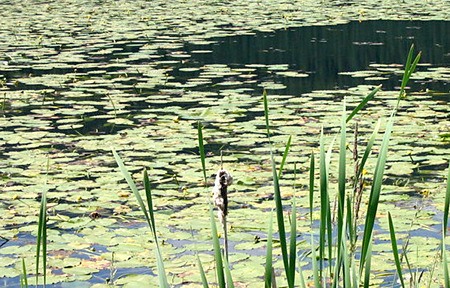To many people, the term “aquatic plant” is synonymous with “weed,” but nothing could be further from the truth.
Aquatic plants are a natural and important part of the aquatic ecosystem, forming the basis of all food webs.
Aquatic plants perform many functions, all of which benefit our water quality and our watershed. Aquatic plants help to keep the water clear by stabilizing soil, trapping sediments and protecting shorelines from erosion.
Aquatic plants also keep the water clean by supplying oxygen to the water and absorbing nutrients and toxins.
They keep the watershed healthy and productive by providing nesting sites for birds, habitat for fish and food for wildlife.
There are three main types of aquatic plants:
• Emergent plants extend above the water surface in shallow areas of lakes, ponds and ditches. They have relatively rigid stems and do not rely on the water for support.
Emergent plants common in Lake Windermere include bulrushes and cattails.
• Floating aquatic plants may be rooted or free-floating. Free-floating plants obtain their nutrients directly from the water. Rooted floating plants lack stem rigidity and depend on the water for support.
Jointed Pondweed can be found in Lake Windermere.
• Submerged aquatic plants have flexible stems and leaves, are rooted in the sediments, and are completely covered by water. Some species have flowers that extend above the surface.
Northern Watermilfoil occurs in Lake Windermere and is beneficial to the quality of the water.
Northern Watermilfoil is often mistaken for Eurasian Watermilfoil, an invasive species native to Europe, Asia and North Africa. Eurasian Watermilfoil occurs in parts of British Columbia, Ontario, and Quebec and will probably continue to expand its range in Canada.
The plant not only has an impact on existing native plants by displacing them, but also on fish populations by interfering with spawning. Eurasian Watermilfoil has not been found in Lake Windermere to date.
Boaters, you can help keep Lake Windermere free of Eurasian Watermilfoil by clearing all plant material from your boat, motor, trailer, wet well and anchor before transporting your boat from another lake. This simple act will protect the native plants and animal diversity in our lake.
This is the second in the series of educational articles about Lake Windermere.
Study up, because there will be a trivia quiz (with prizes) at the Lake Windermere Regatta on Kinsmen Beach, July 23 from 2 to 6 p.m. For more information about Lake Windermere or the Regatta, email info@lakeambassadors.ca or call 250-341-6898.
Megan Kinley and Kirsten Harma
Lake Windermere Ambassadors
